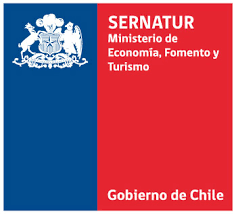One of the most biologically diverse places on earth, from the Salar of Uyuni, the
worldlargest salt flats to the Madidi national park, brims with unique and barely-visited
landscapes and cultures, a wealth of ancient indigenous customs and traditions.
To do in Bolivia
LA PAZ
La Paz city administrative capital of Bolivia, west-central Bolivia. It is situated some 42 miles (68
km) southeast of Lake Titicaca.
La Paz, which lies between 10,650 and 13,250 feet (3,250 and 4,100 metres) above sea level, is
the world’s highest national capital. The centre of the city lies in a deep, broad canyon formed
by the La Paz, or Choqueyapu, River. The city’s location, about 1,400 feet (430 metres) below
the surface of the Altiplano, the high intermontane plateau, affords some protection from the
cold winds of the highlands.

TO DO IN LA PAZ
CITY TOUR PLUS CABLE CAR
Explore the sprawling city of La Paz by cable car on a guided tour that includes key areas, from
El Alto to the stylish South Zone. Traveling across La Paz by cable car puts you high above the
noisy streets, with panoramic views of snow-capped peaks, hillside neighbourhoods, and
downtown.
COPACABANA AND ISLA DEL SOL
Explore Copacabana & Isla del Sol.
Take a tour in Tiwanaku Archaeological Ruins. Tiwanaku is one of the most important sites in South America, this civilization which gave birth to the Incas. We also leave archaeological sites
of great interest, monolithic structures, temples, pyramids and museums which help us to
understand the development of life in South America.

LAKE TITICACA
The world’s highest lake navigable to large vessels, lying at 12,500 feet (3,810 metres) above
sea level in the Andes Mountains of South America, astride the border between Peru to the
west and Bolivia to the east. Titicaca is the second largest lake of South America (after Maracaibo). It covers some 3,200 square miles (8,300 square km) and extends in a northwest-to-southeast direction for a distance of 120 miles (190 km).
The meaning of the name Titicaca is uncertain, but it has been variously translated as Rock of
the Puma or Crag of Lead.

TO DO IN LAKE TITICACA
COPACABANA
Take a Lake Titicaca Catamaran Tour. This lakeside Bolivian town is popular for grabbing a
boat to Isla del Sol and Isla de la Luna. You can also spend a free afternoon around
Copacabana, perusing the souvenir shops and walking up to Calvary Hill (Cerro El Calvario) for
a nice lookout over town and lake.
Southern Bolivia
There are major contrasts in southern Bolivia, partly because it is very big. Potosí, steeped in
history, Tarija is warm, friendly, and easy-going. Sucre is somewhere in the middle, an earnest
university town and the capital of Bolivia. The Salar de Uyuni is, quite simply, out of this planet!

POTOSI
Visiting Potosi means you’ll get a history lesson that you won’t forget any time soon. A visit to the silver mines is fascinating, eye-opening and terrifying at the same time.
TO DO IN POTOSI
A mine tour in Potosi will shock you; it might make you feel uncomfortable, but it is also one of the best things to do in this city. Plus, it will help you to truly understand the history of Potosi
and how it has turned into the city that it is today.
TARIJA
Tarija has pleasantly mild climate and easily walkable colonial
centre full of cute little shops, cafes, and restaurants. Tarija is also Bolivia‘s premier grape
growing region, this wine is produced mostly for local consumption, making it one of the
cheapest in the world without taking a toll on its quality.
TO DO IN TARIJA
While Tarija has some museums, churches and even organized tours to nearby canyons and
Inca trail, my ultimate advice would be to forget about being active here and simply enjoy the great Bolivian wine, excellent steaks and laid-back atmosphere of this city. This is also what this gorgeous city is famous for. Tarija is one of the less visited cities in Bolivia. However, it is a great place to unwind.
SUCRE
The capital, to be more precise, the constitutional capital of Bolivia, which means, the legislative and judicial branches of government. On the other hand, La Paz, is actually the administrative capital of Bolivia. Known as White City, for its white buildings (the vast majority
the them).
TO DO IN SUCRE
Not to be missed, is the Fiesta de la Virgen de Guadalupe, which takes place in December
featuring colourful parades, live music and traditional dances, a city very well-known for its
vibrant cultural scene.
Quinoa, potatoes and corn are a must, featuring in almost all local dishes, Sucre is the heart of traditional cuisine, being “pique macho” a popular dish, which consists of sliced beef, onions, hot peppers and potatoes.
Walking around, you will get to appreciate beautiful colonial-era architecture as Sucre is home to many convents and churches. The Convento de Santa Teresa and the Convento de San Felipe Neri are a worth a visit.

THE UYUNI SALT FLAT
Visiting Salar de Uyuni will satisfy your expectations and beyond. It is simply incredible. Its
10.500 square kilometres of white surface are synonymous of immensity. But you may be
surprised to learn that it has not always been so. The area where the well-known Salar de
Uyuni lies today was covered by Lake Ballivian, Lake Minchin and Lake Tauca. It was the last
one mentioned from whose evaporation the famous Salar de Uyuni was formed. Lake Ballivian
was the predecessor of Lake Titicaca and the Minchin left in its wake the lakes Poopo, Uru uru
and Salar de Coipasa.
These lakes reached an elevation of about 100 meters above the current level of the salt flat,
and covered the current salars of Uyuni and Coipasa, and the lakes Poopo and Uru Uru. This
situation was due to a wet phase with more rainfall than today.
When this period turned onto a dry and warm one, the salt layers under the lakes solidified.
The result was the flat extension known today as Salar de Uyuni. Amazing!

TO DO ON THE UYUNI SALT FLAT
Watching the sunrise at the Uyuni Salt Flat, is priceless. A precious moment to enjoy the
intense mauve tones and the best way to start the day. Knowing the history of Incahuasi Island
and discovering the Train Cemetery and the rests of its abandoned wagons, it is also a great
attraction.
SALT HOSTEL
Sleep in the Salt Hostel, a one in a lifetime experience!
Walking on the Uyuni Salt Flat, is an experience on its own. You will also get to take the most amazing pictures with incredible “magic” effects! It could be your perfect amusement park, as a
photographer! Let your imagination fly!
Mirror Effect of Salar de Uyuni, basically where the sky and the earth become one. The sky is reflected on the desert, leaving an image in the landscape that seems to be edited with photoshop!

Northern Bolivia
RURRENABAQUE
Rurrenabaque located about 300 km (186 miles) north from La Paz, is a charming little settlement on the river “Beni” in the Bolivian lowland. It is famous for its original inhabitants, who until today, have preserved their way of living, customs and traditions of their forefathers.
This area has achieved several recognitions for its wonderful nature as “Best Green
Destination” World Travel Award or one of the 20 most important places on the planet
(National Geographic).
TO DO IN RURRENABAQUE
The so-called gateway to the Bolivian jungle.


MADIDI NATIONAL PARK
You will be able to feel the heart of the jungle beating and hear, even observe, its magnificent
inhabitants such as armadillos, tapirs, and various birds.
It turns out that Madidi National Park will never cease to amaze you with the number of living
beings that inhabit it, it has approximately 867 species of birds and around 150 types of
mammals. Not to mention its many fish, amphibians, and reptiles such as the iguana – Madidi
is the perfect habitat!
YACUMA PAMPAS
A place with the greatest fauna and flora. You will get to know, one of the most diverse places
in the world. An unforgettable experience.
TO DO IN YACUMA PAMPAS
Stay in an Ecolodge, part of a rural community project of the natives, walking in the forest.
Navigate the Yacuma River, where the most famous being of the pampas lives: the pink
dolphin. Boat down the Amazon River, enjoying the pink sunset in the company of pink dolphins leaping by your side.
The Anaconda or Sicuri snake, along with the caiman, also characterize these territories of the Bolivian Amazon.







